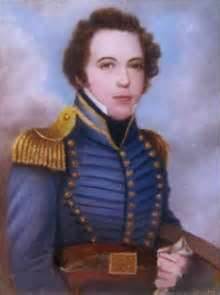The Gadsden Purchase
The Gadsden Purchase was a land deal that completed the outline of the contiguous United States. Signed in 1853, it was named for James Gadsden, who was then the U.S. Ambassador to Mexico. The U.S. gained most of what is now Arizona and New Mexico through the Mexican Cession, the large land handed over from Mexico as part of the Treaty of Guadalupe Hidalgo, in 1848. About the same time, several influential people were campaigning for a transcontinental railroad that followed a southern route. (The Golden Spike was driven in 1869, in Utah.) Much of the southwestern part of the Mexican Cession, however, was mountainous, however, and railroad developers wanted to avoid crossing great heights if it wasn't required.
Gadsden, an avowed secessionist, also advocated splitting the new state of California into two, with the southern part allowing slavery and slave labor to build the railroad he so badly wanted. A convention to discuss a northern transcontinental route took place in St. Louis, Mo., in 1849. Not long after, another convention took place, in Memphis, Tenn. This convention targeted a southern route for the cross-country railroad. The Compromise of 1850 created the New Mexico Territory and the Utah Territory, and the drive for the northern route gained steam. Gadsden's split-California proposition went nowhere, and many in the South lost interest in a southern railroad. 
When Franklin Pierce was elected President, he brought with him an expansionist mindset. He liked the idea of a southern railroad and dispatched Gadsden to negotiate with Mexico in this regard. Gadsden found a willing negotiator in Mexican President Antonio López de Santa Anna, who was looking for money to help rebuild his army (which had been decimated by American forces just a few years before). The combination of Gadsden's desire to buy territory to pursue his railroad dream and Santa Anna's desire to get as much money as possible eventually created the nearly final terms of what is now known as the Gadsden Purchase: The U.S. would give Mexico $15 million, and Mexico would give the U.S. about 54,000 square miles. A treaty was needed to complete the purchase, and the Senate wouldn't approve the treaty unless the purchase price was dropped to $10 million and the amount of land acquired was dropped by 9,000 square miles. Santa Anna accepted the revised treaty, which went into effect on June 30, 1854, six months to the day after the purchase was first agreed. The land and money changed hands, and the U.S. map formed a more complete picture. Construction on the southern railroad got underway and was completed in 1881. Gadsden didn't live to see his dream come true, however, dying in 1858. Santa Anna's agreeing to sell the land, even for that amount of money, proved deeply unpopular with the Mexican people, who forced him to resign. |
|
Social Studies for Kids
copyright 2002–2025
David White



 Gadsden at this time was a businessman. At one point, he was president of the South Carolina Canal and Rail Road Company. His dream was an interconnected Southern rail network, especially since many in the South feared that a northern route from east coast to west coast could leave the South isolated. Gadsden advocated a route that began in El Paso, Texas, and ended in San Diego. Surveyors had already mapped out the route during the latter stages of the
Gadsden at this time was a businessman. At one point, he was president of the South Carolina Canal and Rail Road Company. His dream was an interconnected Southern rail network, especially since many in the South feared that a northern route from east coast to west coast could leave the South isolated. Gadsden advocated a route that began in El Paso, Texas, and ended in San Diego. Surveyors had already mapped out the route during the latter stages of the 
